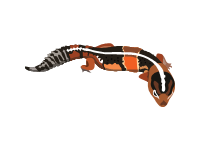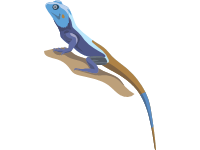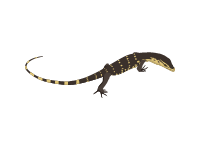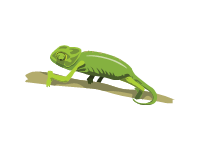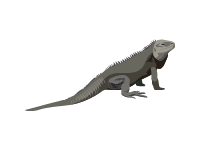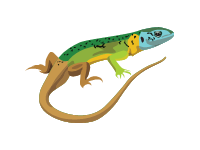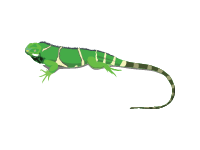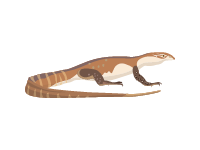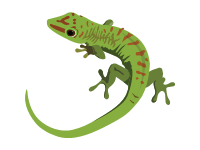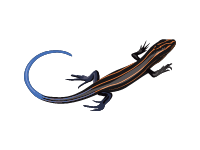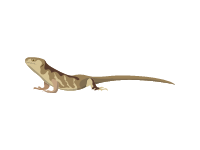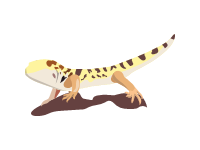The Asian water monitor (Varanus salvator), also called common water monitor, is a large varanid lizard native to South and Southeast Asia. It is one of the most common monitor lizards in Asia, ranging from Sri Lanka and coastal northeast India to Indochina, Malay Peninsula, and Indonesian islands where it lives close to water. The water monitor is a large species of monitor lizard. Breeding maturity is attained for males when they are a relatively modest 40 cm (16 in) long and weigh 1 kg (2.2 lb), and for females at 50 cm (20 in). However, they grow much larger throughout life, with males being larger than females.Adults rarely exceed 1.5–2 m (4.9–6.6 ft) in length, but the largest specimen on record, from Sri Lanka, measured 3.21 m (10.5 ft). The Asian water monitor is widely distributed from India, Bangladesh, Sri Lanka, Myanmar and Thailand, Cambodia, Laos, Vietnam, the Chinese Guangxi and Hainan provinces, Malaysia, Singapore to the Sunda islands Sumatra, Java, Bali, Borneo and Sulawesi. It inhabits primarily lowland freshwater and brackish wetlands. It has been recorded up to an altitude of 1,800 m (5,900 ft).
